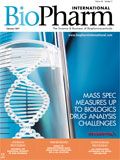Regulatory Reform Is Not That Simple
Reducing regulatory roadblocks requires more than the stroke of a pen.
Professionals involved in the development and manufacture of new drugs understand that drug development is--by design--a slow, deliberate, detailed, scientific, and technical effort. Getting a drug to market quickly is crucial to meet business objectives and provide needed patient treatments. The goal: accelerate the delivery of safe, efficacious, and cost-effective drugs to patients and to keep a steady supply of safe, efficacious, and cost-effective drugs on the market.
While some in the pharma industry complain the drug development and manufacturing process is overregulated, others seek more direction and guidance from regulatory authorities. In recent years, FDA has been promoting a “carrot” approach to compliance oversight, encouraging drug manufacturers to implement quality measures and, in effect, self-regulate their operations. Unfortunately, due to drug shortages and ongoing quality problems, the “stick” is still needed, in the form of regulations, guidance documents, and inspections, particularly offshore.
A new order for rules?
The Trump administration lost no time in pushing forward on its campaign promises including the reduction of regulations perceived to be roadblocks to innovation. Executive action, however, may reduce both regulations and regulatory explanations; impact the implementation of the 21st Century Cures Act, the Prescription Drug User Fee Act (PDUFA), and the Generic Drug User Fee Act (GDUFA); and hinder FDA’s ability to approve new and generic drugs.
A Jan. 30, 2017 executive order, “Reducing Regulation and Controlling Regulatory Costs,” set a regulatory cap for fiscal year 2017 and stated that for every proposed new regulation, at least two existing regulations should be identified for repeal. Based on language in the order, both regulations and guidance documents issued by FDA would be included in the “one in-two out” policy. Positioned as an effort to help small businesses, President Donald Trump described the order as “the largest ever cut by far in terms of regulation” in the signing ceremony. He noted that regulation cuts for large business would “be different” but did not specify the differences.
A freeze on the hiring of federal employees was put in place with a Jan. 22, 2017 memorandum. As of this writing, it was unclear if hundreds of vacant positions at FDA would be deemed necessary for public safety and, therefore, exempt from the freeze.
Promises vs. reality
Regulations are developed for many reasons, most notably to implement enacted legislation. Eliminating mandated regulations could require changes or repeals of existing laws, a lengthy process in any political environment. Guidance documents, which explain FDA’s current thinking on regulations, do not have the force of law, but are used by pharma companies for guidance in complying with regulations and are frequently cited by FDA in warning letters to facilities that do not comply.
The process of writing federal regulations and guidance documents requires input and detailed consideration from knowledgeable professionals. FDA consults pharma industry experts when developing regulations and guidance documents, publishing drafts in the Federal Register and soliciting public comment.
The agency planned an ambitious guidance agenda for 2017; 26 guidance documents were slated for revision and 81 new guidance documents proposed. The implementation of the Cures Act and pending reauthorizations of PDUFA and GDUFA should generate the need for even more regulations.
A “one in-two out” strategy could result in the elimination of vital regulations and guidance documents that prescribe practices to ensure the quality of manufactured drugs for the US population here and abroad. The executive order, designed to fulfill a campaign promise, is shortsighted. At a minimum, it creates confusion and uncertainty for a complex drug development and manufacturing system. If followed to the letter, it could create the safety threats, drug shortages, and fraudulent products FDA was established to prevent.
Article Details
BioPharm International
Vol. 30, No. 2
Page: 7
Citation:
When referring to this article, please cite it as R. Peters, " Regulatory Reform Is Not That Simple," BioPharm Internationa 30 (2) 2017.

VERAXA and Voyager to Create Combined Business for Advancing Pipeline of Next-Gen Cancer Therapies
April 23rd 2025The proposed business combination would create a publicly traded, clinical-stage biopharmaceutical company that will focus on developing a pipeline of next-generation cancer therapies.
MHRA Approves GSK Therapy Combinations for Multiple Myeloma
April 21st 2025Belantamab mafodotin is approved in combination with bortezomib plus dexamethasone in patients who have had at least one prior therapy, and in combination with pomalidomide plus dexamethasone for those who have had a prior therapy including lenalidomide.
Tokyo University of Science Research Team Explores Improved Delivery of Antisense Oligonucleotides
April 18th 2025Using cholesterol-modified oligonucleotides, the research team aims to improve the delivery of antisense nucleotide-based therapies for treating neurodegenerative diseases and brain cancers.